Asus ZenBook UX430UA Review
Asus ZenBook UX430UA
A supremely portable laptop
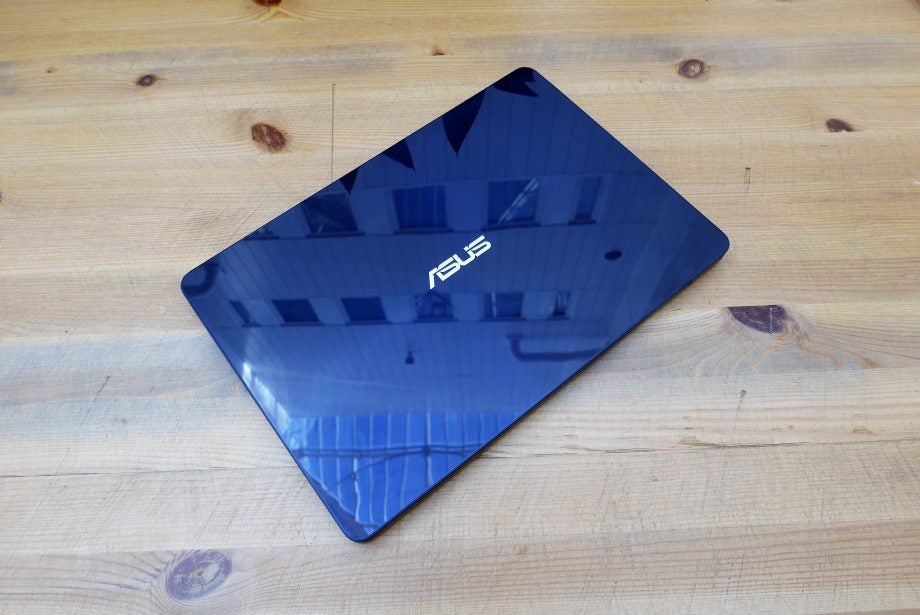
Verdict
Pros
- Supremely portable
- Great keyboard and trackpad
- Anti-glare screen is great for productivity
- Decent performance
Cons
- Not the best value
- Lid picks up fingerprints and smudges
- Disappointing battery life
Key Specifications
- Review Price: £999.99
- Up to Intel Core i7-7500U processor
- 8GB DDR4 RAM
- 256GB SSD
- 14-inch Full HD anti-glare display
- Backlit keyboard
- 1x USB-C, 1 x USB 3.0, 1x USB 2.0
- 1.25kg weight, 1.59mm thickness
What is the Asus ZenBook UX430UA?
The ZenBook UX430UA is one of many thin and light ultraportable Asus laptops. It follows in the footsteps of previous greats, including the UX310UA and UX303UA that delivered a similar combination of performance and portability.
Taking a page out of the Dell XPS 13‘s now familiar playbook, the ZenBook UX430UA manages to squeeze a 14-inch display into the chassis of a conventional 13 inch model thanks to smaller bezels around the screen.
While the display itself is only Full HD, Asus has included premium features elsewhere, including processor options up to an Intel Core i7-7500U, a backlit keyboard, an integrated fingerprint scanner and an array of ports including USB-C. All of this comes packed into a laptop that weighs just 1.25kg, making it a great choice for those constantly on the road.
Unfortunately, somewhat lacklustre battery life and a relatively high price take the sheen off an otherwise good all-round performer.
Related: Best laptops
Asus ZenBook UX430UA – Design and build
The ZenBook UX403UA is available in a range of colours including Royal Blue, Rose Gold, Quartz Gray and Shimmer Gold. The Royal Blue model I was sent for review is hard to miss. It’s got a glossy finish to its lid, which is made from aluminium-alloy. There’s Asus’ trademark concentric circle spun-metal finish to it, but it’s a lot more subtle compared to other models, which sometimes have a ridged texture.
The shimmering blue lid catches the light in an attractive way, and certainly makes a statement if you want a laptop that stands out from the crowd. But it’s a serious fingerprint and smudge magnet, and the blemishes are really hard to miss when the surface catches the light. It also picks up hairline scratches incredibly easily. Even though I kept the laptop in a dedicated compartment in my bag there are a few marks noticeable under the right light.
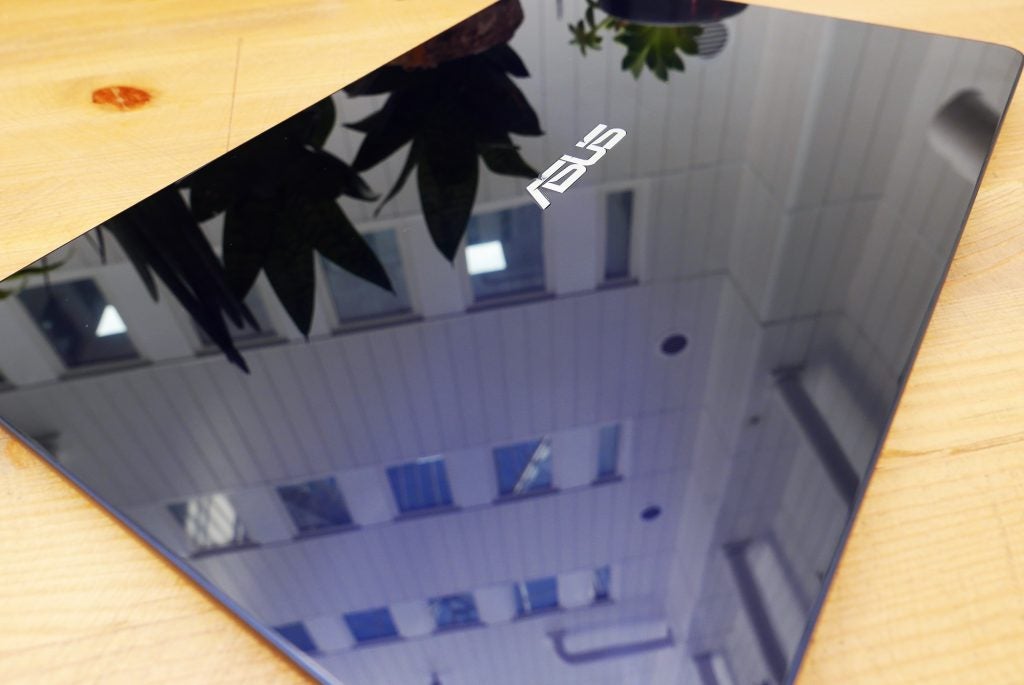
The blue finish continues to the keyboard tray and base but it has a more matte finish and doesn’t pick up greasy marks up quite as easily but does still become a bit grubby. The chassis feels premium in your hands, even though the whole thing weighs just 1.25kg. This is a seriously shoulder-friendly laptop for anyone who needs to travel a lot. Even with the lid open I can pick this laptop up one-handed and carry it comfortably. That’s great if you’re constantly darting between meetings.
At 15.9mm thick it’s also easy to slip into a backpack or messenger bag. This compares favourably with the Lenovo Ideapad 720S, which weighs a heftier 1.55kg (with the same thickness) but is built from more premium materials.
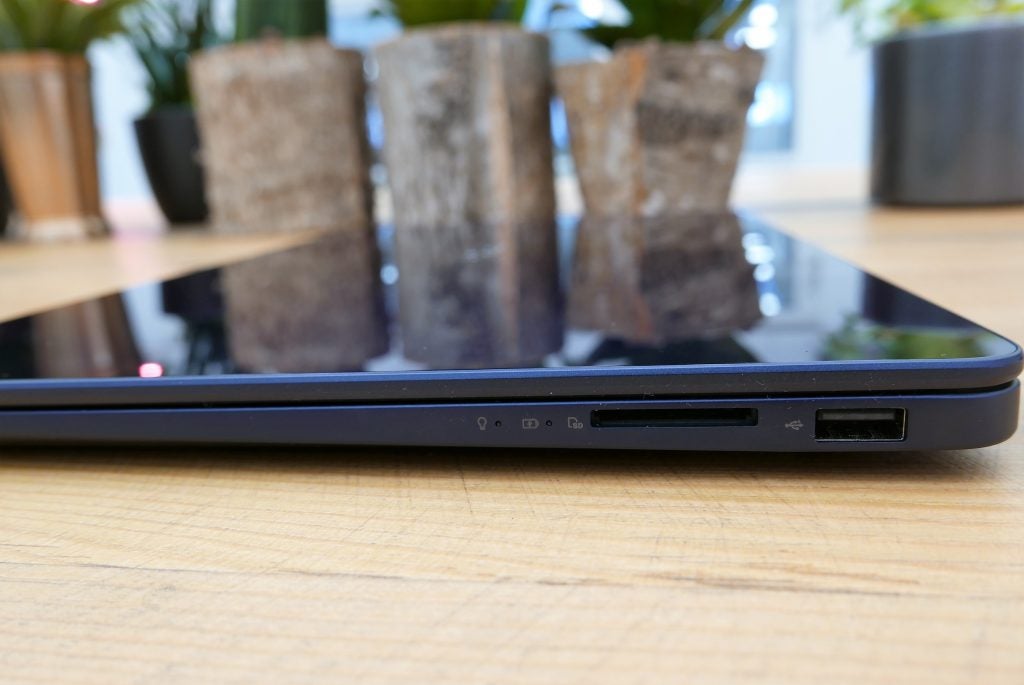
For connectivity, there’s a USB-C port, one USB 3.0 port, a USB 2.0 port and micro HDMI output for an external display. It seems a little odd to have an older USB 2.0 port in this day and age. Top this all off with an SD card reader and headphone jack. It’s a decent array of ports and should be sufficient for most people. You also get micro HDMI to full-size HDMI and USB to Ethernet adaptors included.
Asus ZenBook UX430UA – Keyboard and touchpad
The full-size chiclet-style keyboard has three levels of backlighting and each stroke allows 1.4mm of travel, providing a decent amount of feedback. There’s no flex to the keyboard, either, which can really negatively impact your typing experience. It’s one of the more comfortable keyboards I’ve used in recent months and I rarely found myself ever mistyping. In fact, firing up Type Racer for a few rounds and my speeds weren’t drastically far off my top typing speeds with a trusty mechanical keyboard, which says a lot.
The good news is that while the keyboard is great, the touchpad manages to match it for accuracy and responsiveness. It’s a decent size with a coating that allows your fingers to glide across the surface without too much resistance. While it doesn’t appear to be Microsoft Precision certified, that doesn’t seem to matter much as your swipes are translated to screen without a hitch. As you’d expect it supports all the standard gestures for quickly navigating around.
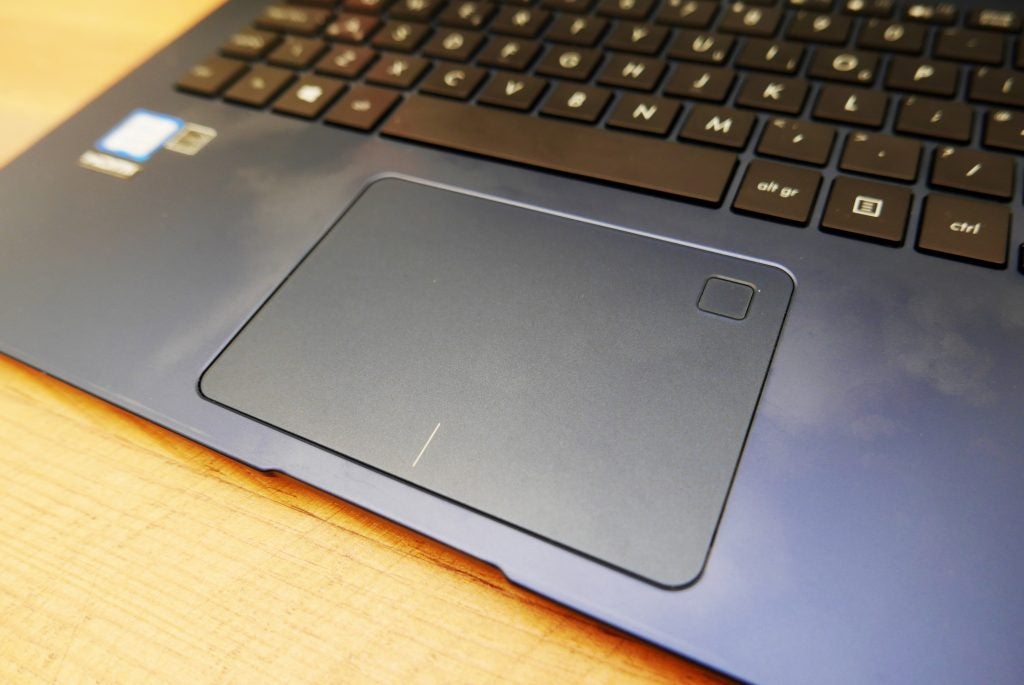
Tucked away in the top-right corner is a small square indentation, which is in fact the fingerprint scanner used for Windows Hello’s biometric sign in. It’s a quick and easy way to sign in without the need to type in a password or pin and I found it worked without a problem every time. It’s a handy bonus you soon take for granted but miss when you use any other scanner-less laptop. I personally like the placement within the touchpad but many other laptops will have the fingerprint scanner elsewhere on the palm rest.
Asus ZenBook UX430UA – Display and speakers
As mentioned, there’s a 14-inch display with a Full HD resolution. Because Asus has managed to shave the bezels down to 7.18mm, it means there’s a screen-to-body ratio of 80%. Much like the recent trend of bezel-less phones, this leaves you more screen in a smaller body. In this case, the UX430UA is around the size of a standard 13-inch laptop; a similar tactic employed by both Dell and Lenovo.
The screen itself has a matte anti-glare coating, which made it easier to see under the bright lighting of the Trusted Reviews office. What you lose from a glossy screen is some contrast, however. The ZenBook UX430UA’s screen has a slightly washed out look to it as a result.
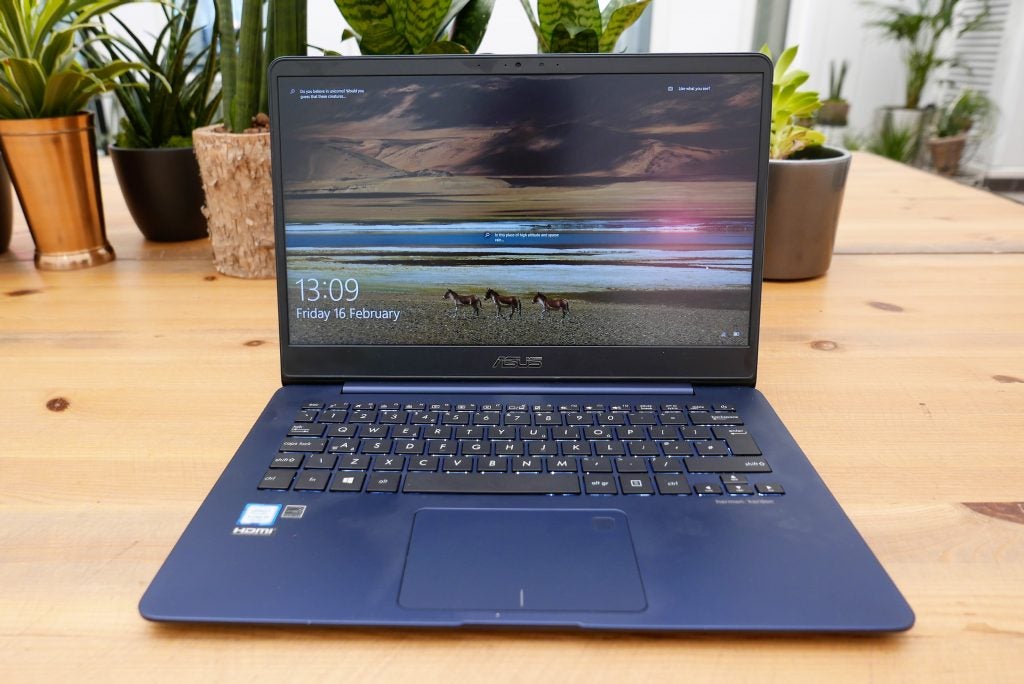
Results from our colorimeter tell a slightly better story than my subjective tests, however. The UX430UA has black levels of 0.30 nits, which are reasonably deep, and a maximum brightness of 335 nits, which is decently bright. You’ll want to turn off the automatic brightness adjustment if you ever want to see it cranked towards the maximum. I found the automatic brightness took a conservative stance and was often a little dimmer than I would have liked. Contrast ratio is 1114:1, so there’s respectable contrast going missing under that anti-glare coating.
Asus says the display should be capable of 100% sRGB coverage, but in my tests I only ever managed to get 93%. The trickier Adobe RGB colour gamut didn’t fare particularly well at just 63.9% coverage. The Delta E of 2.09 (where closer to 0 is best) actually puts the UX430UA above many pricier laptops, however.
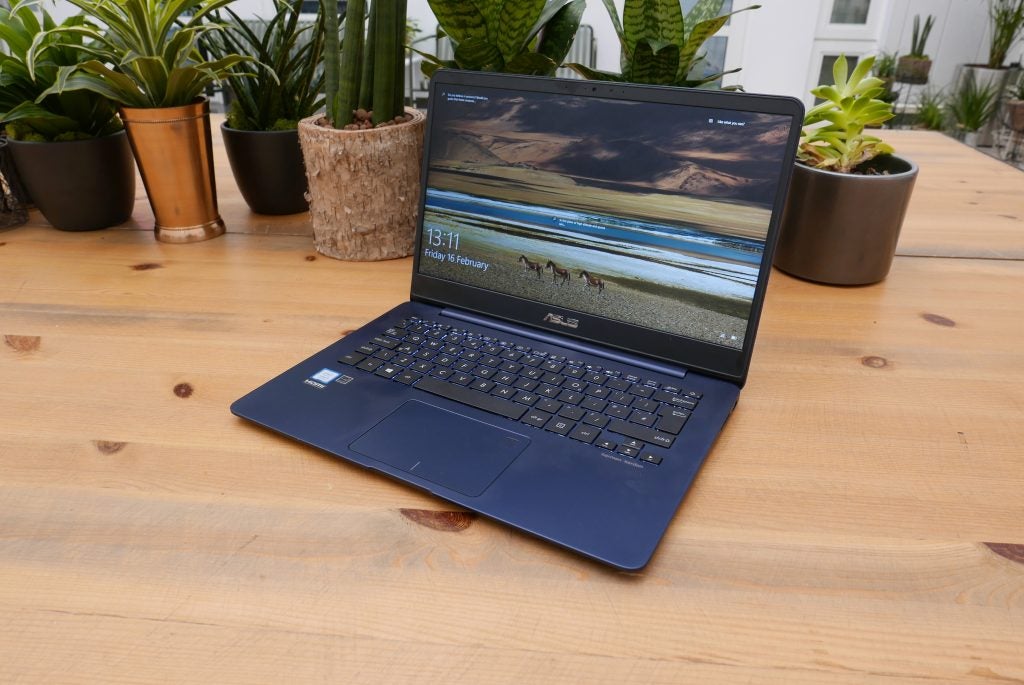
If your day-to-day use is going to be general browsing and productivity, the display is fine, and you may well welcome the reduced eye strain from the anti-glare coating. It’s just not going to make your media particularly shine. I do still wish the resolution was higher as well.
The speakers are tuned by Harmon Kardon and do a decent enough job of not distorting at higher volumes. They don’t have the most presence but there are certainly worse laptop speakers out there.
Related: Best laptops for students
Asus ZenBook UX430UA – Performance
You have a choice of either Intel Core i5-7200U or Core i7-7500U configurations. Both come with 8GB of DDR4 RAM and a 256GB SSD for storage. My review model was the i7 model and retails for around £999, meaning you’re paying about £150 more for the souped-up processor and nothing else, making it not the best value (there’s a similar upgrade option for the Lenovo Ideapad 720S and that only costs £100).
The Core i7 model runs at a base clock speed of 2.7GHz but supports Turbo Boost up to 3.5GHz when thermal conditions allow. Its performance in everyday scenarios was more than acceptable, with no slowdown or stutters when editing images in Adobe Photoshop or browsing with a large number of tabs open in Google Chrome. The ZenBook UX430UA’s PCMark score of 2767 is a testament to this. A Lenovo Ideapad 720S equipped with the lower i5-7200U scored 2426, so not that far behind. Geekbench scores of 3813 in the single-core test, and 7481 in the multi-core test are also very respectable. The ZenBook UX430UA is a more than capable workhorse for most productivity task save for more demanding uses like 4K video editing or 3D rendering.
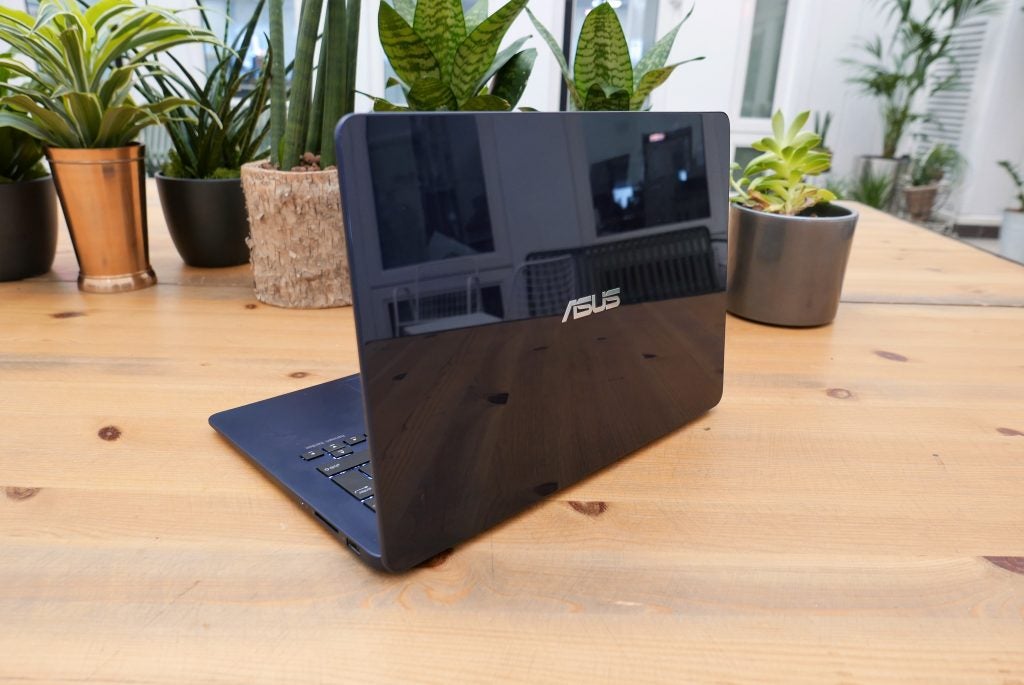
The similarly-priced Lenovo Ideapad 720S has the significant edge in gaming performance, however. That’s because it has a dedicated Nvidia GT 940MX graphics card somehow tucked away in its slim chassis. But even when using the integrated Intel HD graphics it has the ZenBook UX430UA beat, scoring 51696 to the ZenBook’s 42284. That gap opens up when you actually make use of the dedicated GPU, though, where the Ideapad scores 67394. Having said that, the Ideapad can still only manage basic games at low resolutions, but the dedicated GPU will add some processing grunt to applications that can take advantage of GPU acceleration. So if you are planning on tasks like video editing, it’s going to be the better performer.
But even under heavy load, the UX430UA remains reasonably quiet and doesn’t get warm to the touch. Boot up speeds are helped by the SSD and are nice and swift.
Asus ZenBook UX430UA – Battery life
Asus rates the battery life as up to 9 hours from the 50wH battery. This is going to be a pretty optimistic measurement under particularly stringent conditions, however. In our synthetic test, which loops 10 minutes of web browsing and then five minutes of video with the screen brightness set to 150 nits, the ZenBook UX430UA managed a more realistic 4 hours and 30 minutes. At half of Asus’ rated battery life that’s rather underwhelming and half what you’ll see from the Ideapad 720S in the same test. With some careful battery management you should be able to eke out more longevity at least.
Why should I buy the Asus ZenBook UX430UA?
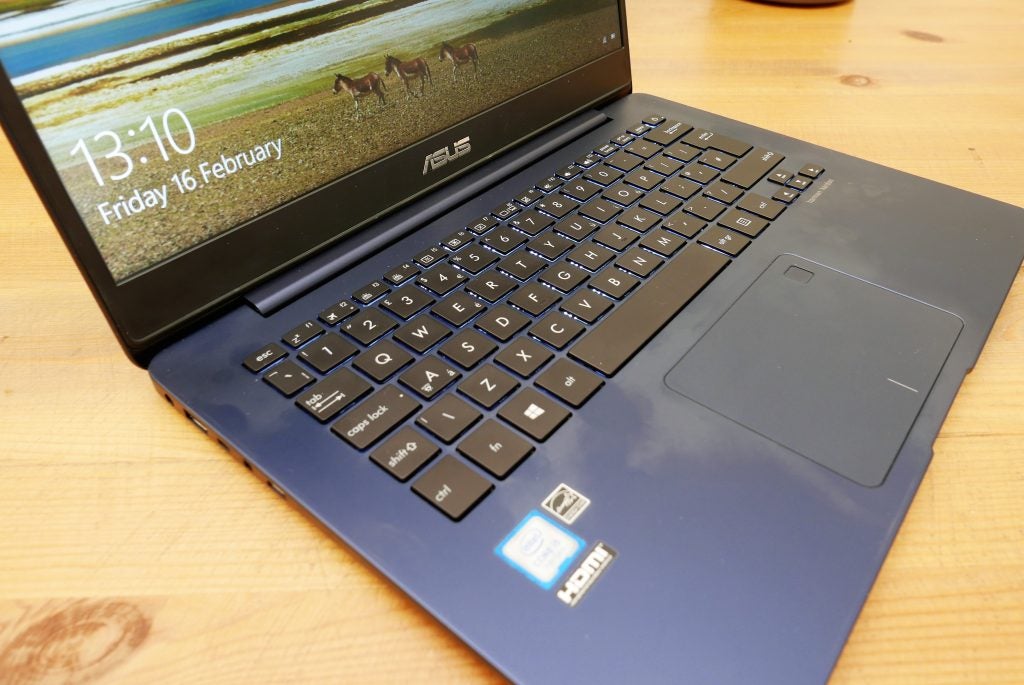
If you’re looking for a thin and light laptop, the ZenBook offers a lot to win you over. It’s eminently portable and manages to deliver a great user experience thanks to its excellent keyboard and trackpad. It’s just a shame that the lid constantly looks grubby due to fingerprints and smudges, as otherwise the array of colours available make the ZenBook UX430UA more exciting than most. The battery life is also rather underwhelming if you’re going to be away from a power socket a lot.
The ZenBook UX430UA is also not the best value in terms of performance for your money. You can currently pick up a Lenovo Ideapad 720S for the same price as the model I’ve reviewed here, but this includes the same Core i7 processor, a bigger 512GB SSD and a dedicated Nvidia GT940MX mobile GPU. That’s a pretty big upgrade if you value the added performance. What you do lose out on is some of the portability but in my mind that’s a worthy trade off, making the Lenovo Ideapad 720S still the laptop to beat in this price range. It remains a worthy winner of our Trusted Reviews Laptop of the Year Award.
Verdict
A super portable and shoulder-friendly laptop with a particularly great keyboard and trackpad but it’s not the best value option.
How we test laptops
Unlike other sites, we test every laptop we review thoroughly over an extended period of time. We use industry standard tests to compare features properly. We’ll always tell you what we find. We never, ever, accept money to review a product.
Trusted Score
Score in detail
-
Performance 8
-
Keyboard 9
-
Design 7
-
Screen Quality 8
-
Build Quality 8
-
Value 7
-
Touchpad 9
-
Features 8
-
Battery Life 6


